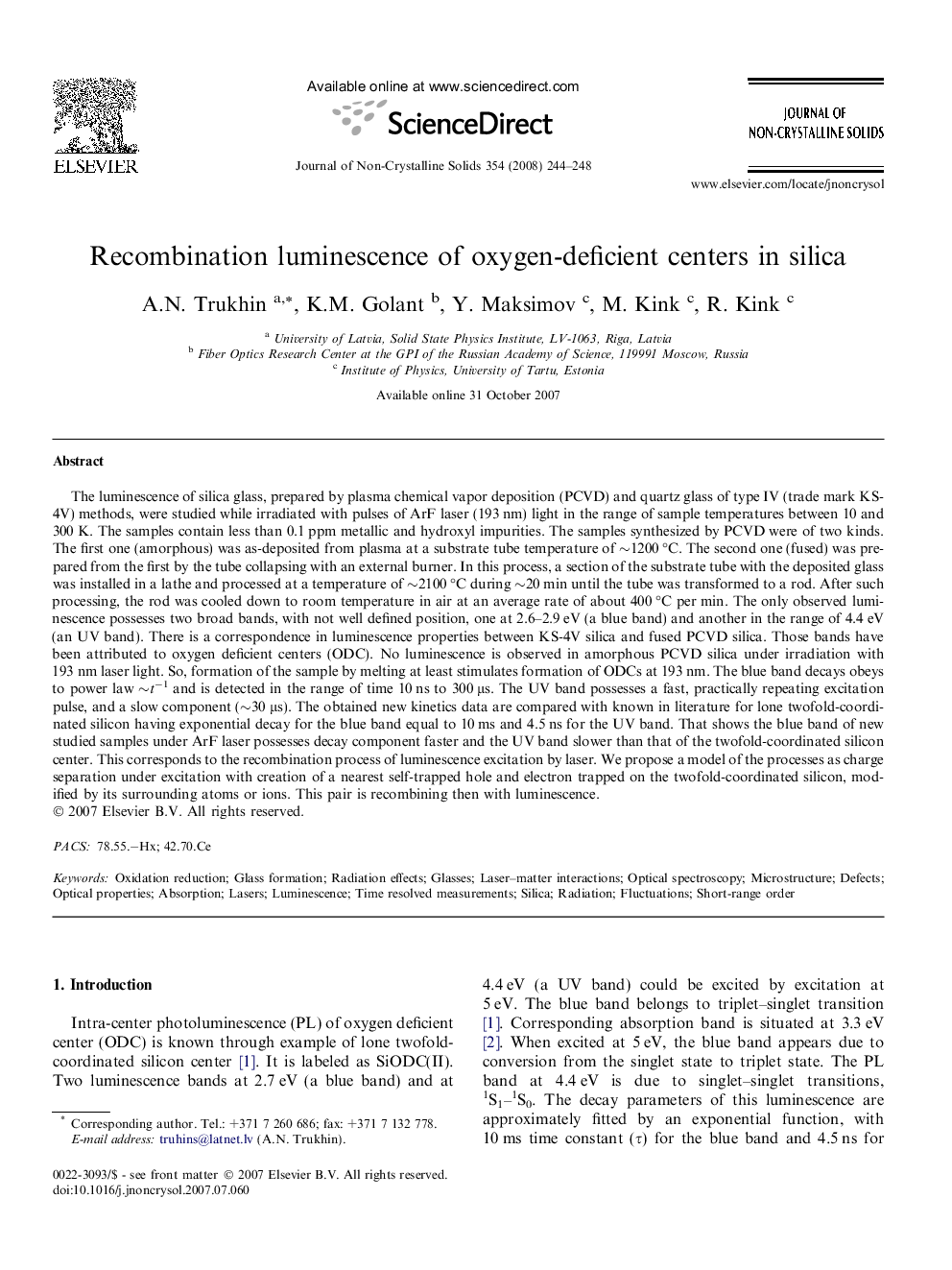| کد مقاله | کد نشریه | سال انتشار | مقاله انگلیسی | نسخه تمام متن |
|---|---|---|---|---|
| 1485049 | 1510529 | 2008 | 5 صفحه PDF | دانلود رایگان |

The luminescence of silica glass, prepared by plasma chemical vapor deposition (PCVD) and quartz glass of type IV (trade mark KS-4V) methods, were studied while irradiated with pulses of ArF laser (193 nm) light in the range of sample temperatures between 10 and 300 K. The samples contain less than 0.1 ppm metallic and hydroxyl impurities. The samples synthesized by PCVD were of two kinds. The first one (amorphous) was as-deposited from plasma at a substrate tube temperature of ∼1200 °C. The second one (fused) was prepared from the first by the tube collapsing with an external burner. In this process, a section of the substrate tube with the deposited glass was installed in a lathe and processed at a temperature of ∼2100 °C during ∼20 min until the tube was transformed to a rod. After such processing, the rod was cooled down to room temperature in air at an average rate of about 400 °C per min. The only observed luminescence possesses two broad bands, with not well defined position, one at 2.6–2.9 eV (a blue band) and another in the range of 4.4 eV (an UV band). There is a correspondence in luminescence properties between KS-4V silica and fused PCVD silica. Those bands have been attributed to oxygen deficient centers (ODC). No luminescence is observed in amorphous PCVD silica under irradiation with 193 nm laser light. So, formation of the sample by melting at least stimulates formation of ODCs at 193 nm. The blue band decays obeys to power law ∼t−1 and is detected in the range of time 10 ns to 300 μs. The UV band possesses a fast, practically repeating excitation pulse, and a slow component (∼30 μs). The obtained new kinetics data are compared with known in literature for lone twofold-coordinated silicon having exponential decay for the blue band equal to 10 ms and 4.5 ns for the UV band. That shows the blue band of new studied samples under ArF laser possesses decay component faster and the UV band slower than that of the twofold-coordinated silicon center. This corresponds to the recombination process of luminescence excitation by laser. We propose a model of the processes as charge separation under excitation with creation of a nearest self-trapped hole and electron trapped on the twofold-coordinated silicon, modified by its surrounding atoms or ions. This pair is recombining then with luminescence.
Journal: Journal of Non-Crystalline Solids - Volume 354, Issues 2–9, 15 January 2008, Pages 244–248